Antique Bible Buyer's Guide: Ancient Rare Bibles & Books
Imagine... Actually owning a complete, genuine original, beautiful, leather-bound 300 to 485 year-old English Bible as a family heirloom and stunning display item for your home.
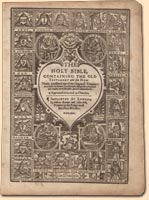 A three, four, or nearly five century old English Family Bible makes the ideal family heirloom. Your children can gain a deeper appreciation for the Bible by holding one of the earliest English printings in their hands. Just gazing upon its ancient print style and thick pages brings a sense of reverence and awe, and reminds one of the sacrifices made by the early printers to bring us these treasured early copies of God’s Word. What an amazing conversation piece and attention-commanding display item for your home! And what a magnificent gift for a very special occasion, or for the “person who has everything.”
A three, four, or nearly five century old English Family Bible makes the ideal family heirloom. Your children can gain a deeper appreciation for the Bible by holding one of the earliest English printings in their hands. Just gazing upon its ancient print style and thick pages brings a sense of reverence and awe, and reminds one of the sacrifices made by the early printers to bring us these treasured early copies of God’s Word. What an amazing conversation piece and attention-commanding display item for your home! And what a magnificent gift for a very special occasion, or for the “person who has everything.”
Many people assume that investment-grade ancient treasures of Christian history must cost as much as a house or a luxury car. In fact, prices start in four figures.
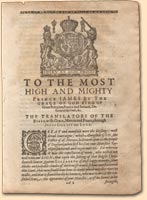 No, not at all! They are very durable, having survived centuries of reading and use, in excellent condition. Unlike the comparatively fragile Bibles printed today, usually made of super-thin “rice paper” or regular wood-pulp paper, glued together and designed for only 20 to 50 years of regular use; these ancient Bibles are typically made of super-strong and very thick acid-free 100% rag cotton sheets (like bed linens), stitched together and designed to last nearly 1,000 years. They don’t make them like they used to!
No, not at all! They are very durable, having survived centuries of reading and use, in excellent condition. Unlike the comparatively fragile Bibles printed today, usually made of super-thin “rice paper” or regular wood-pulp paper, glued together and designed for only 20 to 50 years of regular use; these ancient Bibles are typically made of super-strong and very thick acid-free 100% rag cotton sheets (like bed linens), stitched together and designed to last nearly 1,000 years. They don’t make them like they used to!
Of course, the leather bindings typically last around 150 to 300 years of use before disintegrating, so over 90% of our ancient Bibles have been either completely rebound in fresh, strong, new leather… or at least had their original boards (covers) re-attached to a newer leather spine, one or more times over the centuries. Such restoration is usually required and expected, and does not have a negative effect on the value of the book in any way. Other than applying a leather moisturizing cream to the binding once every few years, they require no special care beyond what common sense would dictate.
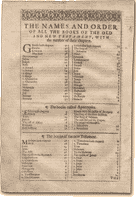 Rare antiquarian (antique) Bibles that are investment-grade can increase in value over the years at a rate that well outpaces the devaluation (inflation) of the currency used to purchase them. Much like coastal real estate, “They aren’t making any more” and demand only goes up each year. Unlike real estate however, it is highly unlikely such treasures will continue to be affordable in decades to come…as the finite supply is continually bought-up by collectors and institutions.
Rare antiquarian (antique) Bibles that are investment-grade can increase in value over the years at a rate that well outpaces the devaluation (inflation) of the currency used to purchase them. Much like coastal real estate, “They aren’t making any more” and demand only goes up each year. Unlike real estate however, it is highly unlikely such treasures will continue to be affordable in decades to come…as the finite supply is continually bought-up by collectors and institutions.
They cannot lose nearly half their value in one year, like many stock market funds have done recently. Indeed, the stock market has finally revealed itself to many Christians as being nothing more than the “socially-acceptable gambling” that it always has been. Also, should a thief break into your home, it is highly unlikely that he would think to steal an old Bible!
Yes, indeed, they are great investments. However, it is important to select antique Bibles that are in excellent condition and collate complete, which means the vast majority of antique Bibles on the market do not qualify, and you should purchase only through a reputable dealer.
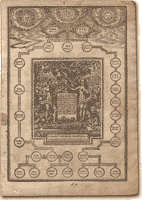 For a deeper understanding of the differences between, and historical significance of, the ancient English Bible translations please read our English Bible History page. Reviewing this Antique Bible Buyer’s Guide page to familiarize yourself with some of the basics of antique and rare Bibles, can also be helpful. Of course, you are welcome to call or email us with specific questions, or general guidance in selecting the best antique Bible within your budget.
For a deeper understanding of the differences between, and historical significance of, the ancient English Bible translations please read our English Bible History page. Reviewing this Antique Bible Buyer’s Guide page to familiarize yourself with some of the basics of antique and rare Bibles, can also be helpful. Of course, you are welcome to call or email us with specific questions, or general guidance in selecting the best antique Bible within your budget.
You may wish to obtain a very large and ornate pulpit-sized “folio” printing (up to 17 inches tall) of a King James or Geneva Bible, as a more grand centerpiece for your home. Or perhaps a standard “quarto” size printing (typically about 8 to 9 inches tall) is what you seek. Contact Us to discuss what is currently available in our inventory.
You can easily Search Our Current Inventory of our website, and then call us to discuss your options in more detail, or to arrange for payment and shipping. You always have a no-obligation 7-day examination period during which you are free to return any Bible for a 100% refund with no restocking fees of any kind.
Generally, beyond the critically important and obvious factors of completeness, condition, and historical significance of a particular edition; three additional factors that most affect a Bible’s price are:
- Age… a 1595 printing usually (but not always) costs more than a 1645 printing
- Size… a 12 to 17 inch tall “pulpit folio” usually (but not always) costs more than a 9 inch tall “quarto”
- Extra Features… the Book of Common Prayer, Psalter-Hymnals, Almanac-Calendars, The Genealogies, Maps, Concordances, Illustrations, decorative red ruling, etc, typically increase the price
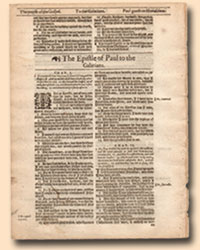 To a lesser extent, the elaborateness of the binding will affect the price, though the age of the binding usually has only a minimal effect, if any, on the price. A Bible’s value depends mostly on the completeness, condition, content, and size of its pages… and not on the age of the piece of leather that it happens to be bound in at this time. Most of our customers actually prefer a strong, fresh, new leather binding, to the worn and somewhat less attractive ancient bindings… though some do prefer the quaint, simple, somewhat distressed look of the older bindings.
To a lesser extent, the elaborateness of the binding will affect the price, though the age of the binding usually has only a minimal effect, if any, on the price. A Bible’s value depends mostly on the completeness, condition, content, and size of its pages… and not on the age of the piece of leather that it happens to be bound in at this time. Most of our customers actually prefer a strong, fresh, new leather binding, to the worn and somewhat less attractive ancient bindings… though some do prefer the quaint, simple, somewhat distressed look of the older bindings.
Collectors of classic cars don’t usually expect a car have its original paint job, and if it does, they will usually give it the nice new coat of paint that it needs. For the same reason, collectors of ancient Bibles are generally not hung-up on the originality of the binding. It’s not about the binding… it’s about the quality of the pages of text.
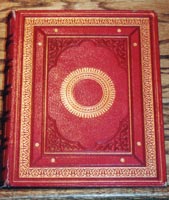 Absolutely! This is a common request, and it does not cost very much. After examining your selection, and finalizing the purchase, we would be happy to put you in touch with one of our preferred binders, or offer advice regarding selecting an antique book binder near you. They can rebind your Bible in your choice of leather color and texture, stamp any design or words you please into the leather spine or covers.
Absolutely! This is a common request, and it does not cost very much. After examining your selection, and finalizing the purchase, we would be happy to put you in touch with one of our preferred binders, or offer advice regarding selecting an antique book binder near you. They can rebind your Bible in your choice of leather color and texture, stamp any design or words you please into the leather spine or covers.
If you plan to keep your ancient Bible as a family heirloom for generations, rather than buying as an investment with the intention of reselling; you may also have your family name gold-stamped or blind-stamped into the leather.
Quality bookbinders usually only charge a few hundred to several hundred dollars, depending upon the size of the Bible, and amount of stamping or ornamentation you desire. Please remember: we do not do this work, but we can refer you to those who do it particularly well. Your ancient Bible’s binding can easily look exactly as you want it to look.
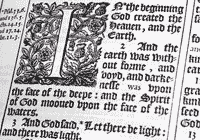 Of course, we do. We ship your Bible via FED EX OVERNIGHT, so you have it the next day. There is no charge for the shipping to you, even if you return it. Examine the ancient Bible for up to seven days, and call us back to let us know if you are satisfied. If it is not all that you hoped it would be, we can either try again with another Bible… or you can return it and owe us nothing.
Of course, we do. We ship your Bible via FED EX OVERNIGHT, so you have it the next day. There is no charge for the shipping to you, even if you return it. Examine the ancient Bible for up to seven days, and call us back to let us know if you are satisfied. If it is not all that you hoped it would be, we can either try again with another Bible… or you can return it and owe us nothing.
If you do not use credit cards, or if your purchase is over $10,000; contact us to discuss alternate no-obligation payment options, such as bank wire funds transfers.
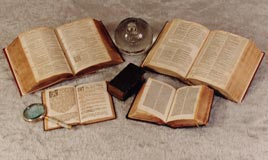 STEP ONE is to Search Our Current Inventory to browse the best selections from our available inventory of ancient Bibles.
STEP ONE is to Search Our Current Inventory to browse the best selections from our available inventory of ancient Bibles.
STEP TWO is to Contact Us to verify availability on any item, and get a more detailed description, and get all your questions answered. While initially contacting us via email is acceptable, we suggest that you call us on the telephone to discuss any item.
Keep in mind: we only deal in excellent-condition, investment-grade Bibles that are more than 175 years old, and indeed nearly all of our inventory is two to five centuries old. These Bibles are always priced in thousands of dollars, not the hundreds. Sometimes, we will have a limited selection of antique theology books written by the Great Reformers or Puritans, that are priced as low as the high hundreds to just over a thousand dollars.
In the very rare instance that a customer is not completely satisfied with the first Bible they receive from us, their reasons usually offer us great insight into what they do and do not like about it, and the second Bible we ship is exactly what they wanted. Our “return rate” is less than one percent, however, so over 99% of the time our customers are pleased with the first Bible they receive from us.
You never pay a dime for any FED EX Overnight shipping to you. No risk. No obligation. We bring our showroom to you within 24 hours. Your satisfaction is guaranteed. Just contact us to discuss your options.
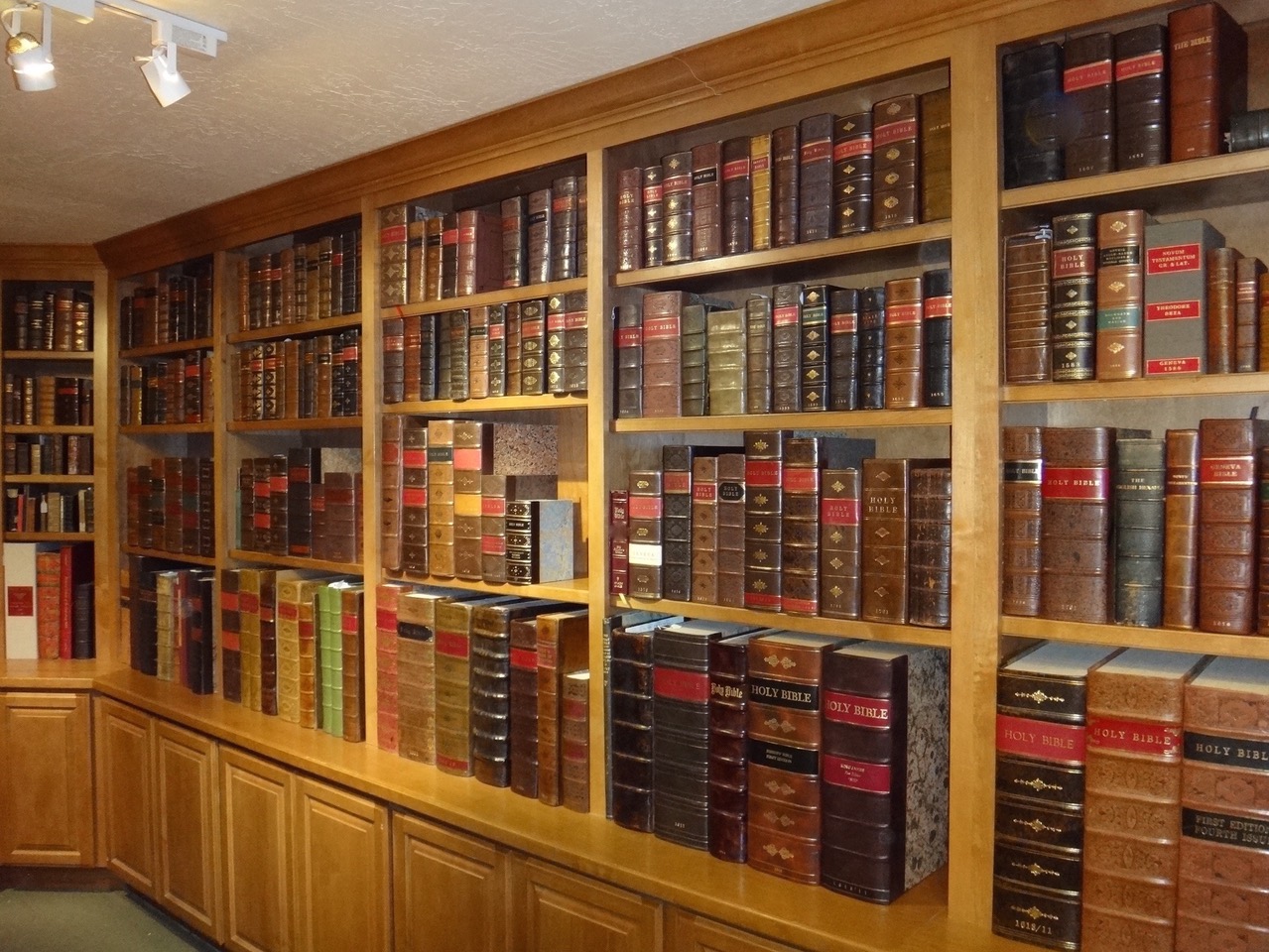
Collecting rare and antique Bibles is a very rewarding hobby, and an excellent investment. Often, however, people who are new to rare and antique Bibles are intimidated by their lack of knowledge in this area of specialty. They feel overwhelmed, and are afraid that they do not know how to tell a $750 Bible from a $7,500 Bible… or that they just do not know where to start. We can help you gain a firm foundation of knowledge very easily, and help you to become an educated consumer in the small but growing field of rare and antique Bible collecting.
The most important thing to understand about antiquarian and rare Bibles, is that their value (their price) is determined by a variety of factors, including:
- Rarity… how many of this printing exist?
- Historical Significance… is it an historically important printing?
- Market Demand… do collectors want to buy this type of material?
- First Edition Status… is it a first (or early) printing of its type?
- Age… how old is this printing?
- Condition… are the pages in good condition?
- Collation… are any pages missing? Which ones and how many?
- Binding… is it nice? Original? Is restoration or rebinding needed?
- Provenance… did someone famous own it? Did they sign it?
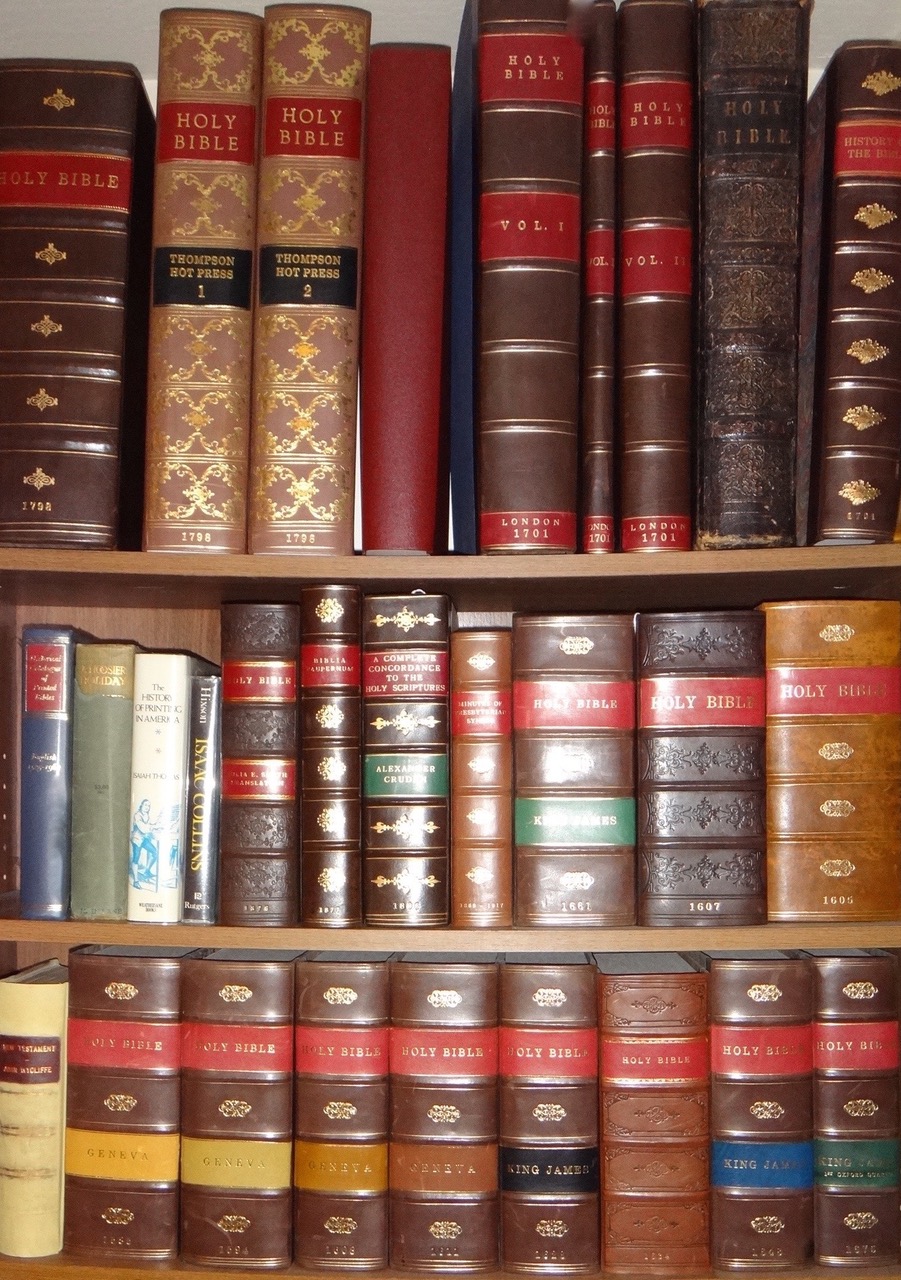
All of these factors are fairly simple and self-explanatory, but we do need to elaborate on one of them: condition. It is important to understand that the condition of the binding, and whether or not the binding is original, is NOT a major factor in the value of most ancient Bibles. Bindings do not usually last for 300 or 400 years anyway, so most of the investment-grade ancient Bibles we sell have been nicely re-bound at least once in their life. The condition and completeness (collation) of the “text block” (the pages) is VERY important to the value of an ancient Bible. Concerning the condition and completeness of the pages, it is important to understand that price increases exponentially as you approach “perfection”.

Consider diamonds, for example: A one-carat round solitaire diamond, “F” in color, and “V V S-2” in clarity is colorless, flawless, and perfect to the naked eye… and would sell for a four-figure price. However, a one-carat round solitaire diamond, “D” in color, and better than “V V S-1” in clarity is colorless, flawless, and perfect under the microscope … could fetch well into the high five figure range. Just like with rare Bibles, price increases exponentially, on a “bell-curve” as you approach “perfection”. With ancient Bibles, however, absolute “perfection” is purely hypothetical.
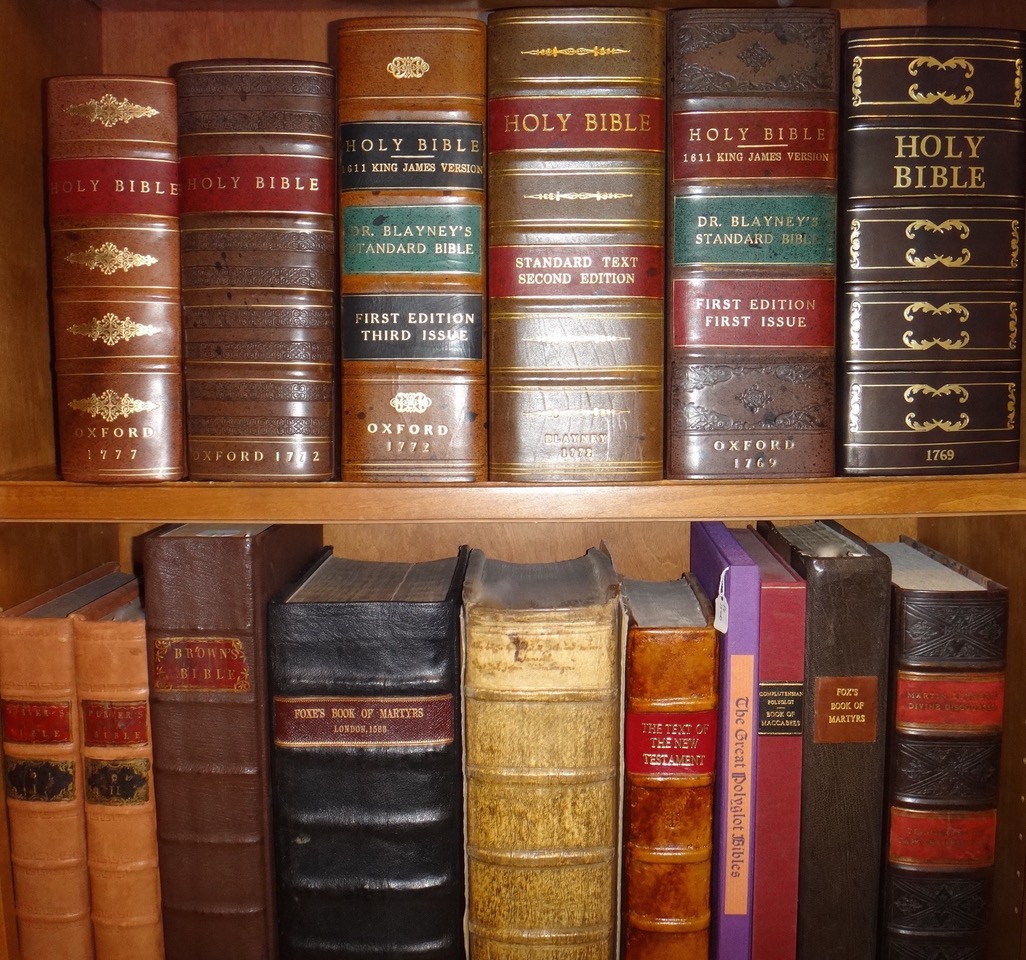
Consider this example: A 1620’s to 1640’s King James Bible in a nice binding, with 100% of the pages of scripture present and over 95% of those pages still in great condition, could sell for over $5,000. However, a 1620’s to 1640’s King James Bible in a nice binding, but with a dozen pages of scripture missing… OR… with a lot of its pages heavily water-damaged or even “cropped” (no blank margin area on the top of the page, and the headlines partially cut off the top… quite common)… could be worth less than $800. Beware of the “bargain priced” antique Bible… it is usually worth a lot less than its “bargain price”.
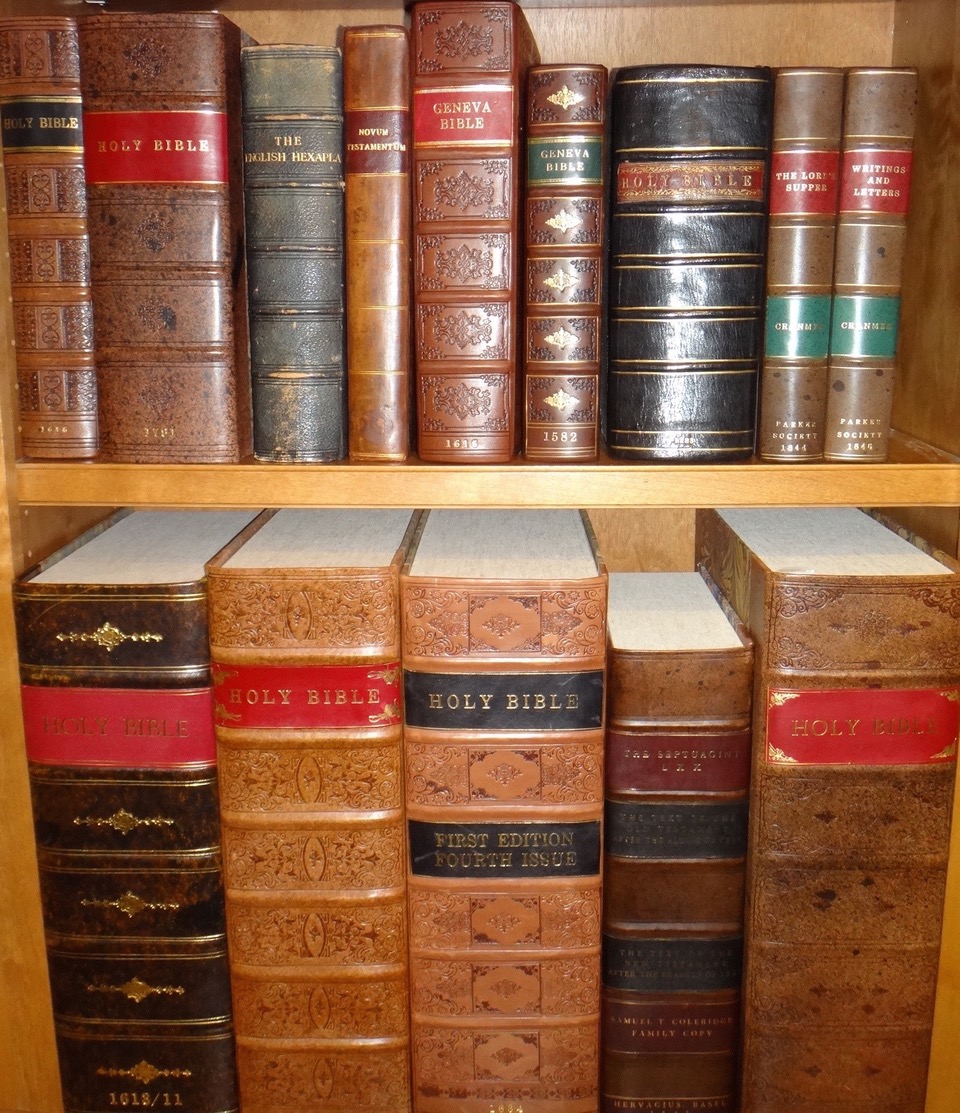
So how can you know you are getting a fair deal? First, Search Our Current Inventory as a general guide to what you should expect to pay for quality investment-grade Bibles. You should also be careful who you deal with. We do not claim to be the only reputable dealers of rare books in the world… but we do claim to sell more rare and antique Bibles than all the other rare book dealers in the world COMBINED. Think about that for a moment.
Here are some technical terms that will assist you as you explore the world of ancient Bibles:
- Nearly 90% of all books and Bibles are standard “Quarto” size printings, approximately 6.5 to 7 inches wide by 8.5 to 9 inches tall by 2 to 3 inches thick. Larger pulpit “Folio” size printings are ten times as rare, and therefore more expensive. Smaller coat-pocket “Octavo” size printings are also available, though they are not as popular because the print is so small that it can be difficult to read.
- Typeface style in ancient Bibles is either “Gothic Black Letter”, a fancy gothic calligraphy-like typeface, or “Roman” type, a plain and crisp easy-to-read typeface like one would find in a modern book. The Gothic Black Letter may be slightly harder to read (not difficult once you get used to it), but it is much more popular than Roman style among collectors because Black Letter is so very beautiful.
- Bindings on ancient Bibles are always hardcover. Most are full leather (spine and both boards are covered in leather). Some are “half-calf” (spine is leather, as are the corners of the boards, but the center of the boards are cloth or marbled board). Armored or ornamented bindings with metalwork at the corners and center and clasps and latches that hold the book shut may be lovely, but they are extremely rare… being present on fewer than five percent of ancient Bibles. Most ancient Bibles do have raised-bands on their spine… also known as a “hubbed” spine. While many people initially say that they want a Bible with an ancient binding… we have found that people who actually visit our showroom, and see ancient bindings and professionally rebound Bibles side-by-side, usually choose the newer bindings. This is because they are more attractive, and have no wear on them. Rebinding a Bible in fresh, strong, new leather does NOT decrease its value, and can in some instances increase its value.
- Decorative stamping done into the leather is either “Blind-stamped”, where an impression is stamped into the leather resulting in a design, or “Gold-Stamped”, where gold has been applied into the groove of the stamping (such as the words “Holy Bible” might be stamped in gold on the spine). Sometimes gold-stamping on the spine is done on a separate square of colored leather, which is applied to the spine. This is called a “Label”.
- A “Psalter” is what the church used before modern hymnals were introduced in the 1700’s. It is essentially the Book of Psalms, with the wording restructured so as to be more conducive to singing aloud. Many Psalters have the five-line musical stave with notes above selected passages. The Psalter-Hymnal was frequently bound into ancient Bibles.
- The “Book of Common Prayer” is also frequently found in ancient Bibles. This is the Church of England’s official reference book for what to say at a wedding, funeral, baptism, communion, etc. Did you ever wonder where we got familiar passages like, “Dearly beloved, we are gathered here today in the presence of God and these witnesses to join the man and this woman in the bonds of holy matrimony.”? What is that little book that the pastor is reading from at these services? It’s the Common Prayer Book. Today they are published separately, but centuries ago, they were bound into some Bibles.
- The “Table of Names and Table of Things” are what we today refer to as a “concordance”. This is essentially an alphabetical index to the scripture, helping you to locate a passage based on what words appear in that passage. This is perhaps the one feature of ancient Bibles that is still commonly included in the back of Bibles printed today.
- If a Bible is listed as having “The Genealogy” present, this does NOT mean that it has some family’s personal genealogy in it. It means that it has the exquisitely beautiful and ornately illustrated three-dozen page-long “Family Tree of Man”. This wonderful feature traces every generation of the first four thousand years of mankind: from Adam and Eve… through Noah… through David… to Joseph, Mary, and Christ … without missing a single generation! It is a tragedy that this is no longer a part of Bibles printed today.
- If a Bible is listed as being “Ruled in Red”, this does NOT mean that somebody underlined favorite passages in red, nor does it mean that the words of Christ appear in red (a feature that did not exist in Bibles until the 1900’s). “Ruled in Red” means that a wealthy nobleman once owned the Bible, and hired an early scribe to use a straightedge and quill with red ink to do a decorative straight-line border around each page of the Bible! This was a very expensive and time-consuming task, made popular in the 1500’s by the wealthy.
- Many early Bibles had the New Testament printed one year before or after the Old Testament, and were bound two or three years after that. The “Colophon” Date is the printing date that appears on the last page of the New Testament (Rev. 22). Often, a Bible’s New Testament will have a date of printing on its Title Page that is a year or two earlier than the date on it’s Old Testament. When a Bible is listed as having multiple printing dates , it does NOT mean that it is a “hodge-podge” of different printings! It is ALL THE SAME PRINTING, it just used to take 2 to 3 years or more to print and bind a whole Bible
Now that you have a general overview of collecting antique and rare Bibles, you may want to Search Our Current Inventory to browse the best selections from our current inventory of investment-grade ancient Bibles as display items for your home, a gift for a special person, or of course… as a family heirloom to pass down for generations in your family.
As always… please do not hesitate to CONTACT US at any time if you would like to discuss any concerns or questions about rare and antique Bibles. We have found that ten minutes on the phone will usually clear up any confusion, and help you to decide what type of Bible would best suit your needs as a collector or investor.
